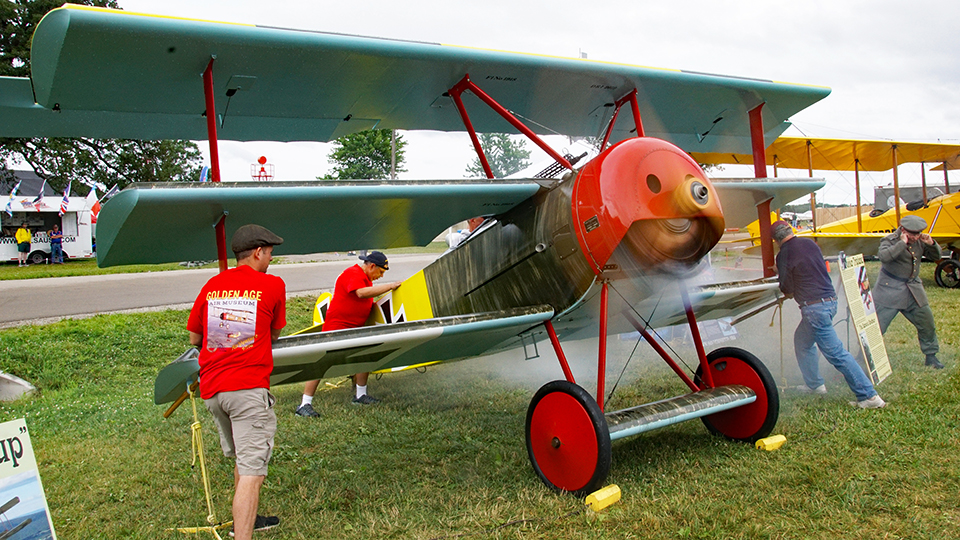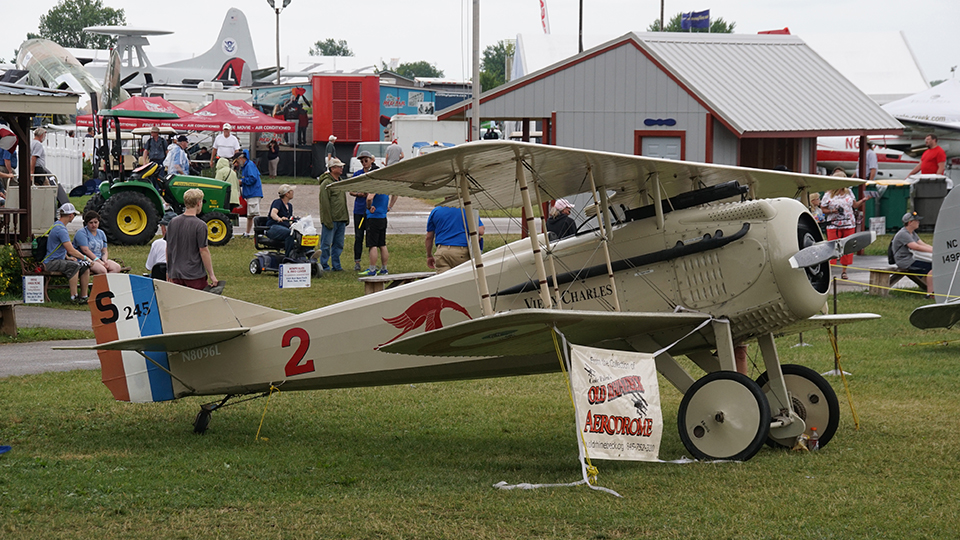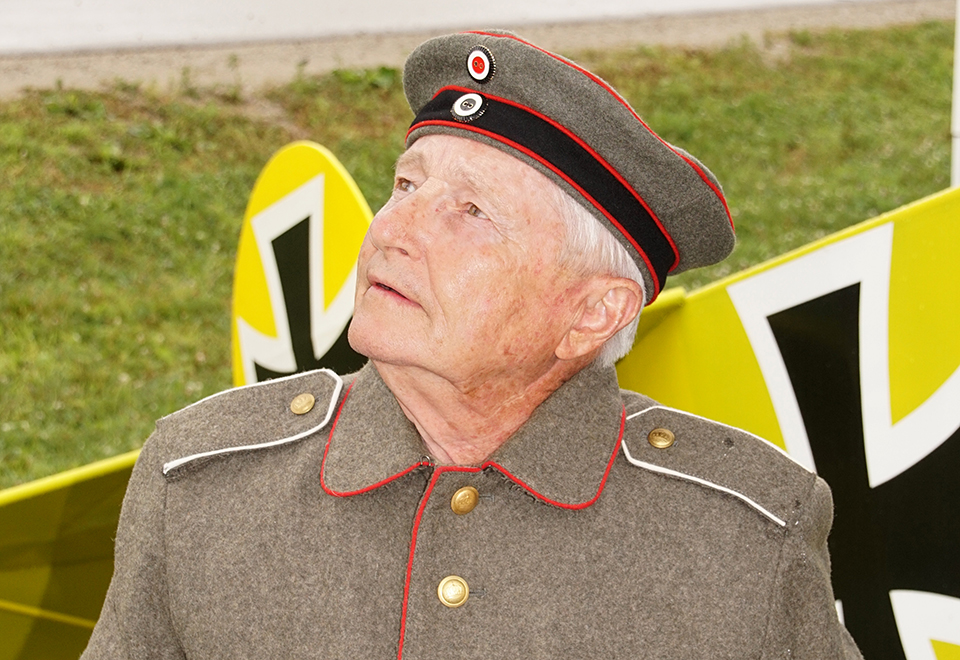WWI Fighters Come to Life at AirVenture
Contact!
By Frederick A. Johnsen
July 28, 2016 - The centennial of World War I is remembered at AirVenture 2016 by a unique gathering of replica and original airplanes of that era from several collections including EAA’s. In addition to a scheduled flying show in the morning calm at 7 a.m. tomorrow, engine run demonstrations are planned for 2:30 p.m. today in the Vintage area, near a World War I military encampment.
Visitors may be treated to the sights and sounds of an original rotary engine, its cylinders spinning in time with the propeller as it spews oil aft. And a bright yellow barnstorming Standard J-1 has a vintage Hispano-Suiza engine swinging its large wooden propeller much more slowly than the rpm on your typical air-cooled Cessna.
The Golden Age Air Museum of Bethel, Pennsylvania, trucked its well-scaled Fokker triplane and a modern-engined replica Sopwith Pup to AirVenture to participate. The museum crew needed about five hours to reassemble the Sopwith Pup for flight at Oshkosh. The Fokker triplane took half that, because Fokker used a design devoid of bracing wires.
The museum’s Mike O’Neal, a self-confessed World War I aviation geek, said the triplane is an exacting re-creation of its World War counterpart. “The only concession we made in this airplane is we made the tailskid steerable,” O’Neal explained. The shape of the skid digs into the turf, providing some steering control when it is moved to the side, he said. And, by the way, O’Neal counts the late 1960s feature film The Blue Max among the best World War I flying movies because in an age before computer-generated imaging, the flying scenes were real, with full-size aircraft.
Neil Baughman flies for the Golden Age Air Museum. He said one of the biggest surprises for new visitors to the World War I aircraft is “they don’t have brakes.” People are also surprised how small full-size World War I aircraft are. He said the classic World War I aviator’s scarf is not merely a fashion statement. It was a necessity for pilots riding behind oil-spewing early engines.
Meanwhile, parked nearby in the Vintage show area, a replica SPAD VII French fighter, concealing a modern Continental engine, is a visitor from the legendary World War I collection of Cole Palen in upstate New York. Baughman said the community of World War I aircraft operators tends to collaborate, swapping parts among themselves to help projects in work. “It’s a small world, and you see people trying to help out.” Which is important, especially when one is dealing with technology a century old.
The World War I aircraft exhibitors are happy to show their machines to AirVenture crowds — weather permitting. Schedules for engine runs and flights have to be flexible estimates; in inclement weather, these fragile gems from the past may need to remain under cover. They are brought from the far side of the field into public view when the weather allows.


